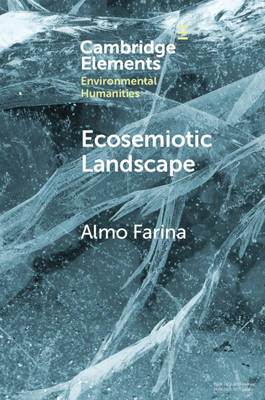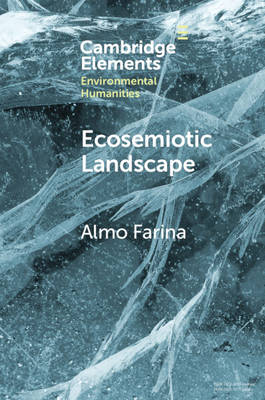
- Afhalen na 1 uur in een winkel met voorraad
- Gratis thuislevering in België vanaf € 30
- Ruim aanbod met 7 miljoen producten
- Afhalen na 1 uur in een winkel met voorraad
- Gratis thuislevering in België vanaf € 30
- Ruim aanbod met 7 miljoen producten
Zoeken
€ 31,95
+ 63 punten
Omschrijving
The distinction between humans and the natural world is an artefact and more a matter of linguistic communication than a conceptual separation. This Element proposes ecosemiotics as an epistemological tool to better understand the relationship between human and natural processes. Ecosemiotics with its affinity to the humanities, is presented here as the best disciplinary approach for interpreting complex environmental conditions for a broad audience, across a multitude of temporal and spatial scales. It is proposed as an intellectual bridge between divergent sciences to incorporate within a unique framework different paradigms. The ecosemiotic paradigm helps to explain how organisms interact with their external environments using mechanisms common to all living beings that capture external information and matter for internal usage. This paradigm can be applied in all the circumstances where a living being (man, animal, plant, fungi, etc.) performs processes to stay alive.
Specificaties
Betrokkenen
- Auteur(s):
- Uitgeverij:
Inhoud
- Aantal bladzijden:
- 75
- Taal:
- Engels
- Reeks:
Eigenschappen
- Productcode (EAN):
- 9781108819374
- Verschijningsdatum:
- 18/02/2021
- Uitvoering:
- Paperback
- Formaat:
- Trade paperback (VS)
- Afmetingen:
- 152 mm x 229 mm
- Gewicht:
- 136 g

Alleen bij Standaard Boekhandel
+ 63 punten op je klantenkaart van Standaard Boekhandel
Beoordelingen
We publiceren alleen reviews die voldoen aan de voorwaarden voor reviews. Bekijk onze voorwaarden voor reviews.











